Alcador - 1995
Ludovic Binder, owner of a Windhound 6.9 and close friend of Franco Sbarro, asked the students at the Sbarro Center to work on a sports roadster prototype based on his own Ferrari Testarossa. The metamorphosis was extraordinary, and gave birth to the Alcador.
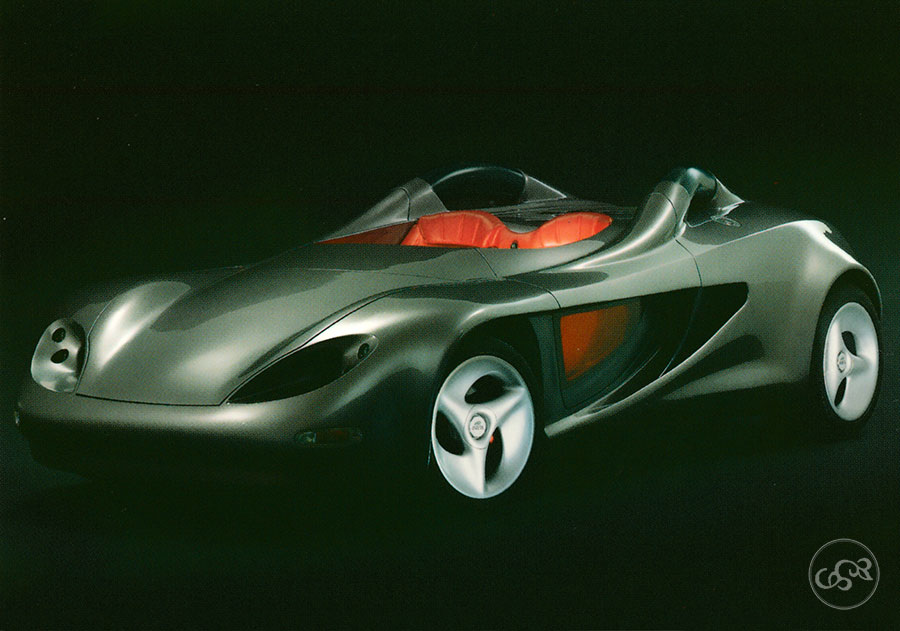
A start on the racetrack
Before looking at the car in more detail, the origin of the name Alcador simply comes from the first syllables of the first names of Mr Binder's three granddaughters: Aline, Catherine and Dorine.Working on a Ferrari is great enough for the young students at the Sbarro Center. But even before they started work, they had the surprise of being able to drive the donor Ferrari Testarossa on the old Lignières circuit. This gave them an extra boost of motivation and, above all, an understanding of the sensations such a car offers its driver. Sensations they will now be able to exacerbate.
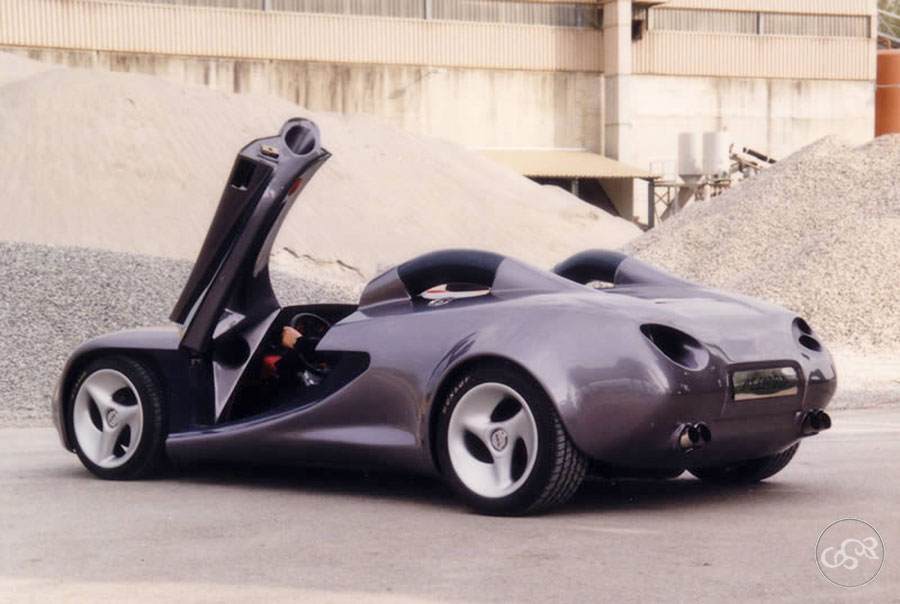
Testarossa
This is the first time a private customer has ordered a car from the Espera Center. Franco Sbarro couldn't really get started on this project, as he was busy opening his third school, in Pontarlier, France. So it was left to the students.The Alcador takes many elements from the Testarossa. The chassis is not a Dual Frame as one might have expected. It's the Ferrari chassis, modified. The 12-cylinder engine is original, as is the five-speed manual gearbox. The car is rear-wheel drive. The whole weighs around 1,600 kg.
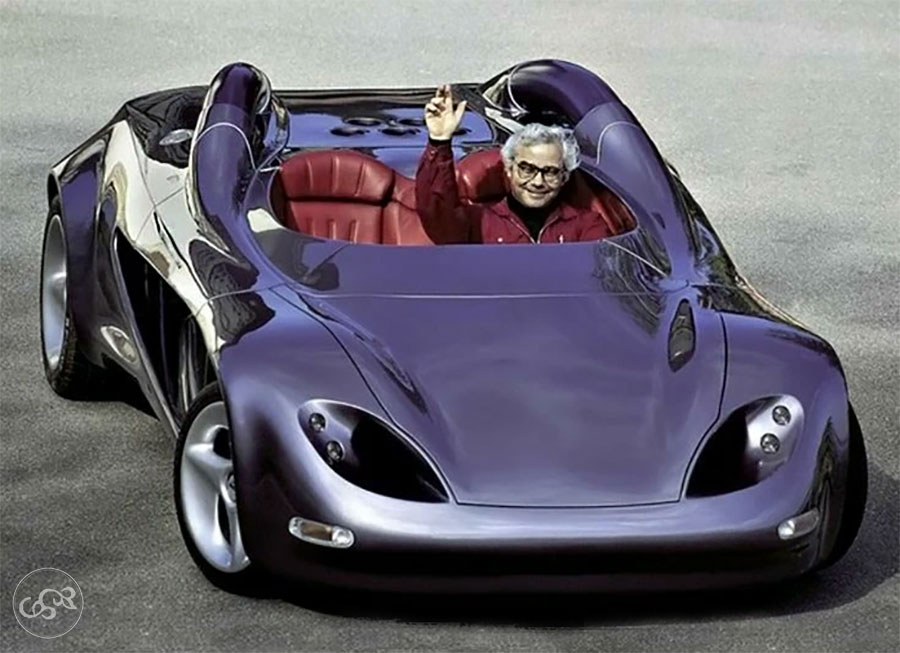
Aerodynamic arches
The Alcador is all about style. Aggressive, a far cry from the original Testarossa. Wide wings, massive rear, no roof or windscreen. The doors open like elytra. Seats are molded directly into the hull and covered in leather. Transparent panels in the doors let you see the road as you drive by. Curiously, there are no rear-view mirrors.Above all, there are the two longitudinal arches that frame the cockpit on either side. In addition to their aesthetic appeal, these tubes are said to improve air circulation. The air enters the openings at the front headlights, is channelled to the rear and exits at the rear lights. Vincent Basso, who later worked for PSA, was one of the students who championed this design and principle, even though no aerodynamic studies were undertaken. Franco Sbarro was more interested in the safety aspect of these hoops in the event of the car overturning.
The body mold was digitized and built to life-size by Ateliers Chausson in Reims (France).
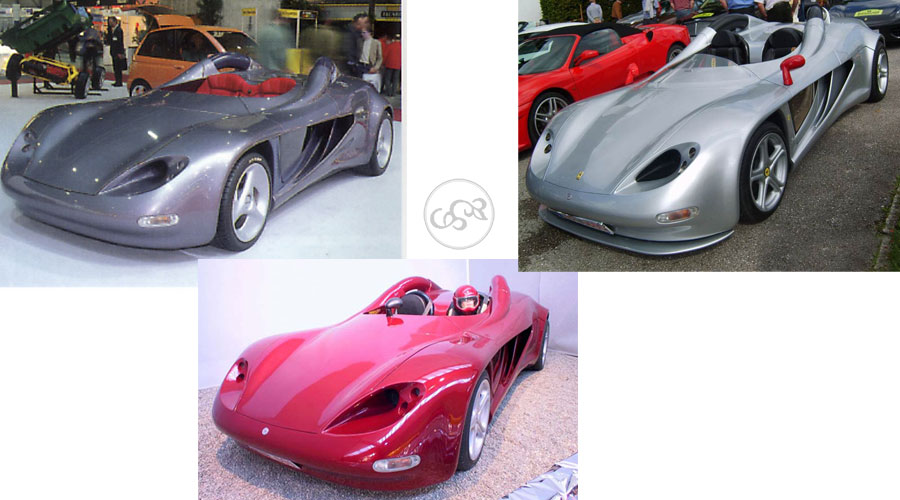
Were there several Alcador models? I can't say. According to the photographs I've found, the car is dark gray with red seats, just like at the 1995 Geneva Motor Show. There are photographs of a red model with beige seats and a light gray model with black seats, a Ferrari logo on the hood and mirrors that the others don't have. The green color of the Alcador on the cover of the Feu Vert catalog, published shortly afterwards, was a digital retouch.
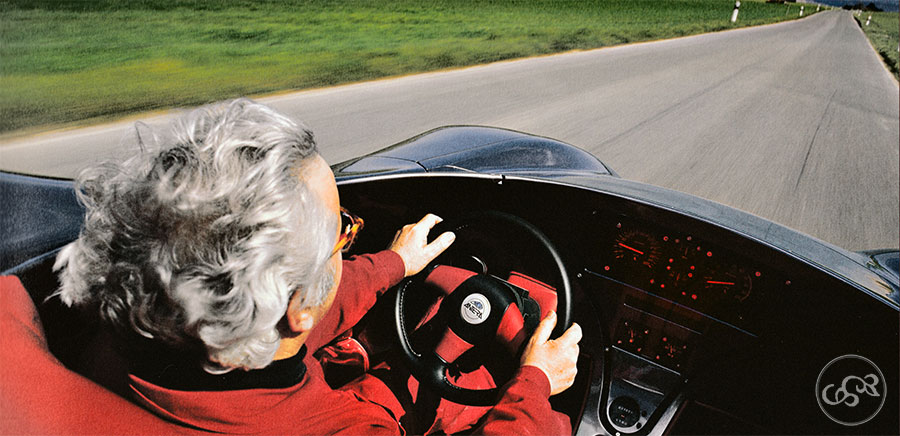
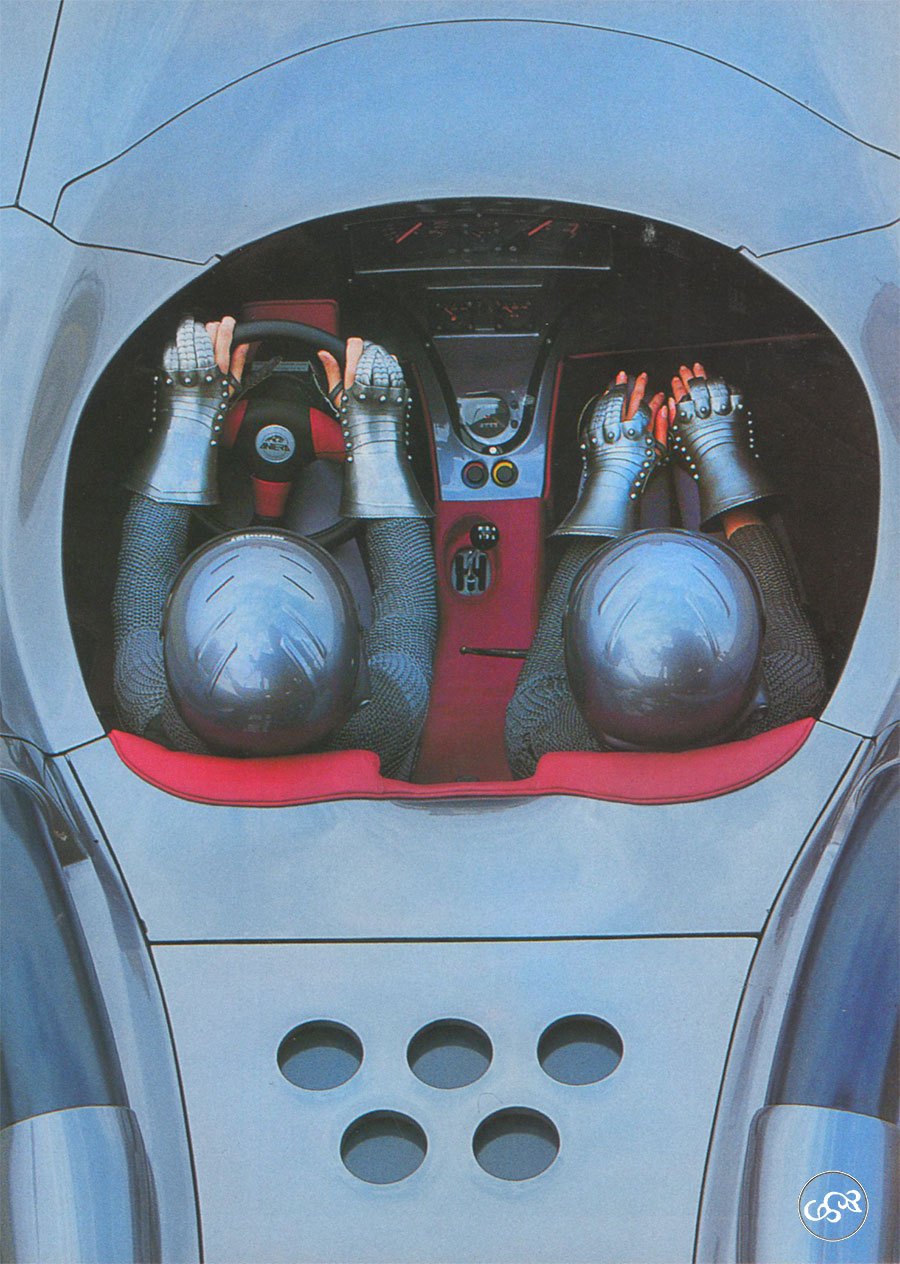
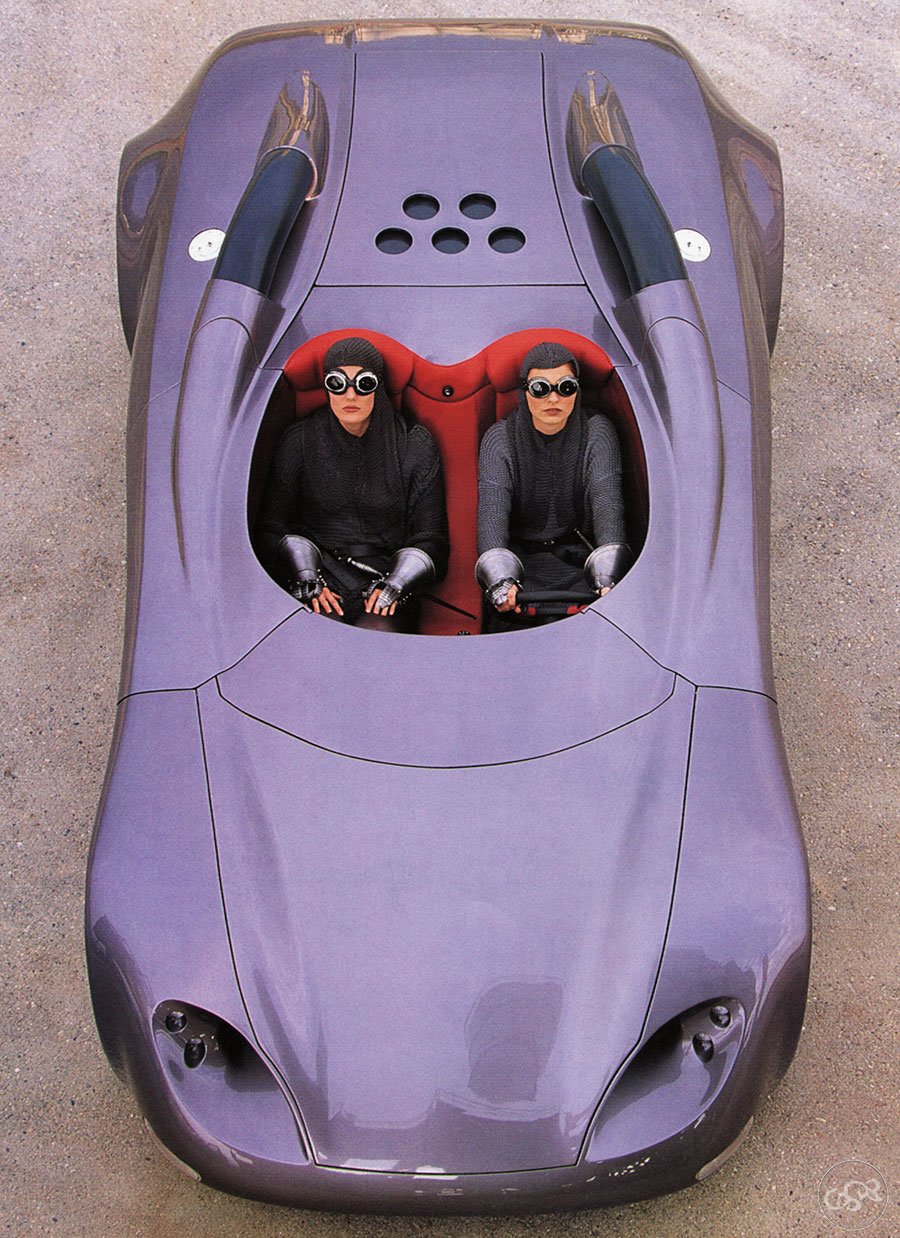
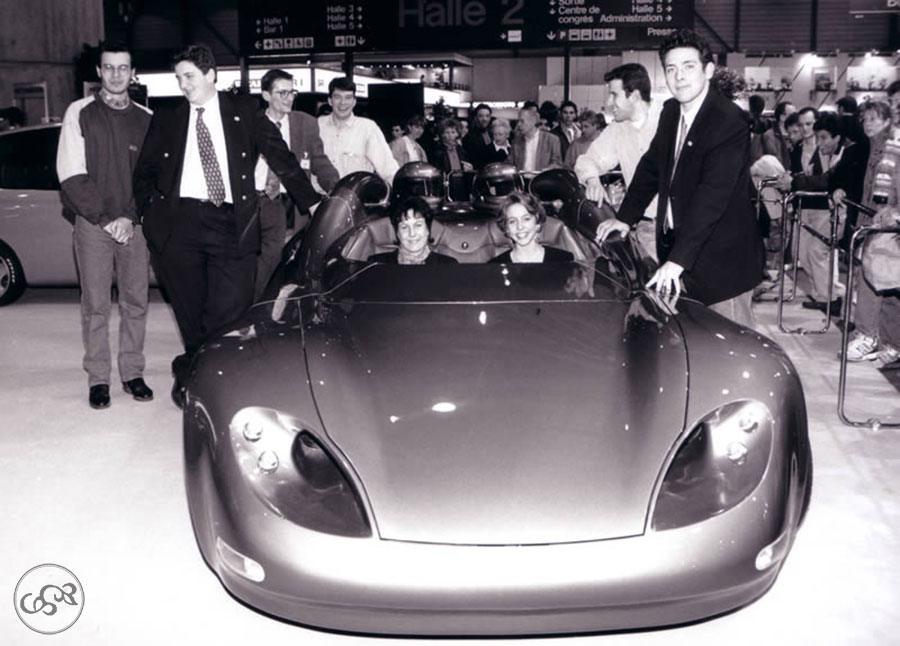
In brief
1- Extreme roadster based on Ferrari Testarossa
2- Aesthetically pleasing aerodynamic arches
3- The name Alcador is an acronym